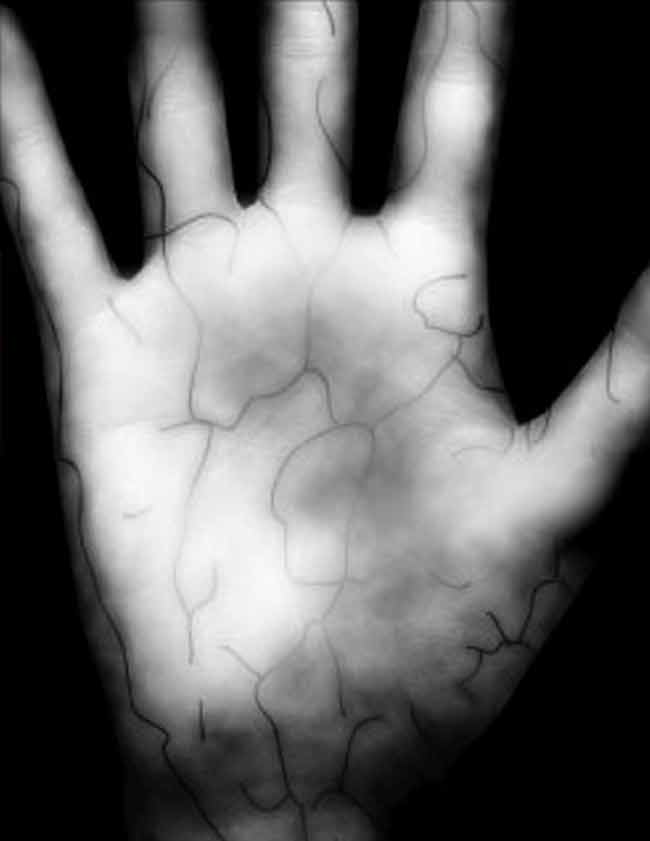Palm Scanning: Better Than Fingerprints

Forget fingerprint scanners, which have replaced password access on some high-end laptops. Forget iris scanners, especially their creepy use portrayed in the 2002 Tom Cruise movie, "Minority Report."
No, the future of biometrics (automated identification using body parts) involves scanning palms.
At least, that's the message from Fujitsu Computer Products of America, which recently unveiled palm-scanning technology for the U.S. market that's already in widespread use in Asia. Hiroko Naito, Fujitsu's business development manager, said that the firm's PalmSecure technology uses near-infrared scanning to identify people by the pattern of veins in their palms, which are as distinctive as fingerprints.
"It's a contactless device — you just hold your hand over the sensor, so it's hygienic and easy to use," Naito said. "We have heard so many times from customers that the reason they were hesitant about biometrics is that it could be intrusive."
Will they be used?
Scanning systems, offered by third parties using Fujitsu components and software, should retail for less than $1,000, she said.
Geoffrey Turner, senior analyst at Forrester Research, said that fingerprint scanners are already deeply entrenched in the U.S. market, and that the scanners used by fingerprint systems are much smaller than palm scanners, making them more attractive for desktop use. (Fujitsu, however, has come out with a palm scanner built into a mouse.)
Sign up for the Live Science daily newsletter now
Get the world’s most fascinating discoveries delivered straight to your inbox.
"The chief reason for the development of the palm scanner is that in Japan fingerprints are associated with criminality, so there is a strong cultural aversion to using fingerprint scanners," Turner said. "And there is the question of hygiene, since people will be touching something. To make an impact here, palm scanning will have to overcome the strong head start that fingerprint swipes have."
More body parts
Naito said that one of the major advantages that PalmSecure has over fingerprint scanners is that a significant percentage of the population — as high as 8 percent — cannot use them because of damaged or missing fingers.
"Anyone can use our system," she said. "If they have lost their hand they can do some other part of the body."
Turner shrugged. "If you don't have even one finger left you really can't use a keyboard," he noted.
Fewer body parts
Speaking of amputations, the removal of body parts in order to fool a security scanner is a plot staple of grittier science-fiction movies, but Naito said that fooling a security system with an amputated body part should not be possible with palm scanning — or least, she didn't think so.
"As soon as the hand loses blood pressure the veins start changing shape, so it should not work," she said. "But ethically we have not been able to test that, because it would involve cutting off someone's hand for the before-and-after test."
However, the system has been tested with corpses and found to not work, since the system must detect blood flowing through the veins (just how is a secret) before it will issue an authorization. This technology also prevents the system from being fooled with color photographs, Naito said.
- How Fingerprints are Created
- Do Identical Twins Have Identical Fingerprints?
- The Next Step: Wild New Technologies









